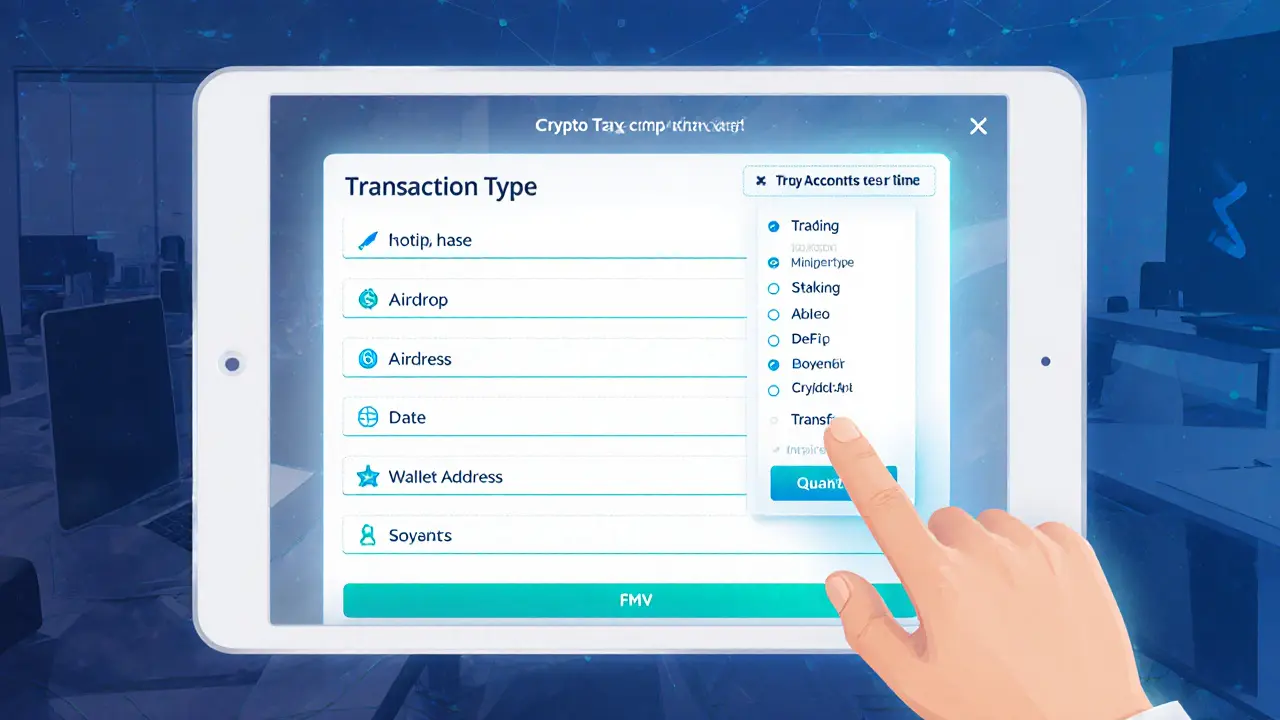Form 1099-DA: How It Works for Crypto Income
When dealing with Form 1099-DA, the IRS document used to report dividend‑type earnings from digital assets. Also known as Crypto Dividend Form, it captures payouts that look like traditional stock dividends but come from staking, DeFi rewards, or airdrops. IRS the U.S. tax authority that enforces reporting rules expects this form whenever you earn more than the filing threshold, and missing it can trigger penalties.
Why Form 1099-DA Matters for Crypto Traders
The core idea is simple: Form 1099-DA encompasses any crypto‑derived dividend, staking reward, or airdrop that is treated as ordinary income. It requires you to list the payer, the amount paid, and the date of distribution – just like a regular 1099‑DIV. This means you need to keep track of tax withholding any amount the platform deducts for federal tax and match it against your own records. The form also influences your overall tax liability because the reported amounts flow directly into your Form 1040, line 3b for ordinary income.
Two major related entities shape how you handle the form. First, Form 1099 the family of information returns covering interest, dividends, and miscellaneous income provides the template and filing deadlines – usually January 31 for recipients and February 28 for the IRS if filing by paper. Second, crypto tax reporting the broader process of declaring all taxable events from digital assets determines whether a payout falls under dividend rules or capital‑gain rules. Understanding this relationship helps you avoid double‑counting the same transaction.
Here’s how the pieces fit together: the IRS defines the reporting requirement (Form 1099‑DA), the crypto platform generates the form (or provides the data), and you use tax software or a spreadsheet to reconcile the figures. If the platform withholds tax, that amount reduces your overall tax bill, but you still need to report the gross figure. This triple – form, platform, software – forms the backbone of accurate crypto dividend reporting.
Practical steps to get it right start with gathering all statements from staking providers, DeFi protocols, and airdrop distributors. Look for columns labeled “Dividend,” “Reward,” or “Staking Income.” Next, match each entry to the payer’s EIN (Employer Identification Number) – often found in the platform’s tax center. Enter the totals on the appropriate lines of Form 1099‑DA, double‑checking the dollar amounts and dates. Finally, import the completed form into your tax software; most major programs have a dedicated 1099‑DIV module that accepts the same fields.
Common pitfalls include treating airdrops as gifts (they’re usually taxable), forgetting to report small‑scale rewards that still exceed the threshold, and overlooking foreign‑exchange conversions when the reward is paid in a non‑USD token. To avoid these, set up a calendar reminder for the January filing deadline and keep a running log of every reward, even if it seems insignificant. Many traders use spreadsheet templates that automatically calculate the USD value at the time of receipt, which simplifies the conversion process.
Now that you know what Form 1099‑DA is, why the IRS cares, and how to nail the numbers, the next step is to see how these concepts apply across different crypto topics. Below you’ll find guides on DAO tokens, crypto licensing, exchange reviews, airdrop strategies, and more – all curated to help you stay compliant and profitable in the fast‑moving world of digital assets.

Crypto Tax Record Keeping: Complete Guide to Stay IRS-Compliant
Dec 21, 2024, Posted by Ronan Caverly
Learn how to keep flawless crypto tax records under the new 2025 IRS rules, including Form 1099-DA, wallet-by-wallet accounting, and tools to stay audit‑ready.
MORESEARCH HERE
Categories
TAGS
- decentralized exchange
- crypto exchange review
- cryptocurrency
- crypto coin
- CoinMarketCap airdrop
- smart contracts
- tokenomics
- cryptocurrency exchange safety
- crypto exchange
- cryptocurrency airdrop
- crypto airdrop
- cryptocurrency exchange
- crypto airdrop guide
- blockchain token distribution
- DeFi
- crypto exchange scam
- crypto airdrop 2025
- Ethereum
- cross-chain interoperability
- ERC-20
